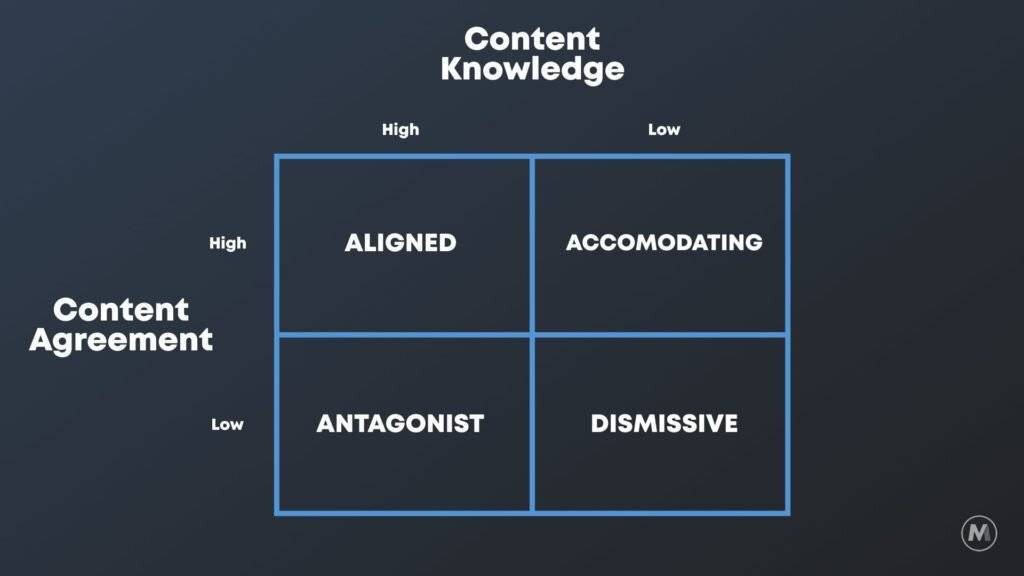
Bhrett McCabe
How Well Do You Know Your Clients?
While working as a senior-level liaison in the pharmaceutical industry, I began noticing a problem with the way our organization went about doing regular business. What I found was that our salespeople went to the customer with the idea that we had a good product, good data, and a good economic forecast. Instead of having a program, we just assumed that the assets and strengths of our product and our business would change the customers' ideas about us and result in better business.
Unfortunately, that simply wasn't the case. Far too often, our team members would have team meetings with customers, whether high-level opinion leaders or regular customers at the ground level and would leave the meetings without much energy or action. As a result, repeating that process over and over again started a cycle of frustration. We had a tremendous product but not a lot of engagement.
I was sitting back thinking one day that there's got to be a way to do it differently. Why is it that every customer or every team member on our team is assumed to be at the same place with the same readiness to take action as another? That simply does not hold true within the psychology of behavior change. As a psychologist, it is evident to me that we must have a plan that works, develops, tailors our interventions and actions to the individual needs of the client.
"This is the most powerful psychological change mechanism I've ever seen in business."
How well do you know your clients?

Let’s set the stage. Your potential clients fall into one of these 4 buckets. At the top of the chart you have “Content Knowledge” or, how well do they know your product/material? On the left side of the chart Is “Content Agreement” or, how much do they agree or buy into your product or material? Each section is segmented into whether or not the customer as a high or low comprehension of that particular topic. Make sense?
In the upper left-hand corner, is what I call Aligned customers - they have a high knowledge base and understanding of what your organization and your product/service does. Their wants in needs are in alignment with what you are providing and they buy into you and, in turn, your organization. In a perfect world, this is where you would like every customer or potential customer you encounter to be. Unfortunately, that's just not the case.
In the bottom right corner, you have your Dismissive customers (or if you want to stay with the theme of A’s throughout the chart, they can be referred to as A-holes). They have absolutely no understanding of your product or service and they simply do not like or trust you. They have made an assumption, not based on data or facts, but because they just don’t like you for some unknown reason.
Those two groups of people are at opposite ends of the spectrum. The Aligned is already a raving fan of your team, while the Dismissive essentially wants nothing to do with your organization...yet.
The groups in the middle - the Accommodators and the Antagonists - are the ones that can be influenced the most. However, these two groups of people are also the ones that most businesses fail to pursue and, therefore, struggle for multiple reasons.
Let me explain why
In the upper right-hand corner you have the Accommodators. They have very little understanding of your product or service, but they absolutely love you and your organization. They’ll tell you how great you are, but their actions do not reflect their belief system in you or your product.
For example, let’s take the fitness industry. You own a gym, and there is a client that has missed several training appointments at your gym. This particular client says things like “I love coming here to train with you." Or, "Our workouts are awesome, and I feel so good when I leave.”
Awesome, right? You feel great that this person is having a positive experience.
But, this individual has missed his/her last five training appointments. They haven’t done anything you have recommended, and they continue to no-show. Something is not adding up. They really like you, and by pumping you up and making you feel good, they’ve kept you at bay by telling you how great you are and how great your product or service is, because they do NOT want to commit to what they’re NOT doing.
Which brings us to the last person, the Antagonist. The Antagonist is very intelligent and aware of your organization's product or service, but they do not agree with it. The tendency in dealing with antagonists, and where most businesses get in trouble, is that you try to FORCE the product or service on someone who clearly is not in alignment with it.
This person is a GOLD MINE! They’re going to tell you everything you need to know about your product, they just don’t agree with it…yet. They are tremendous options for objective feedback, opinions, etc.
Knowing this information, how do you move each of these buckets to act?
Aligned - More than likely, these individuals are already your customers or will be soon. Your job is to keep them there.
Accommodating - They need to be educated. What about your product or service are they not buying into or agreeing with? Have they not identified how it will impact their lives or the lives of their customers? Do they not believe you? Do they not believe the product or service will work for them? Identify these issues so you can move them into alignment.
Antagonist - Remember, this group loves your product or service. They just haven't bought into you yet. Find the common link or thread to bring them to your side. Remember, people don’t buy products or things, they buy feelings. They buy identities and states of being. If they haven’t bought into you yet, keep that in mind.
Dismissive - Obviously, this group is a challenge. When interacting with the dismissive customers, find something to talk about that has nothing to do with what you’re working on. When I was in the pharmaceutical industry, I used to go into offices and look on the bookshelf. I tried to find a book that they had read that I had read also and talk about that. The idea is to start building trust, which is vital. If you can move a Dismissive to an Accommodator, that’s a win!
This is the most powerful psychological change mechanism I've ever seen in business. Whether you're developing a strategy for your company or you're giving the tools to your employees to go out and front face with customers, they should be tailored and you should have a plan for every single customer you have. If you don't have it, then you are allowing your competitors to be one step closer to stealing your business.